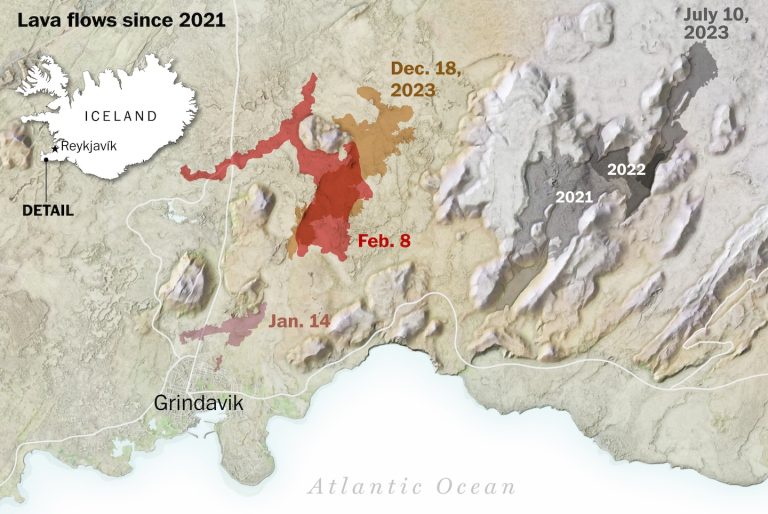
Hot water pipeline
Cut by lava
Aerial photo source:
Civil protection in Iceland
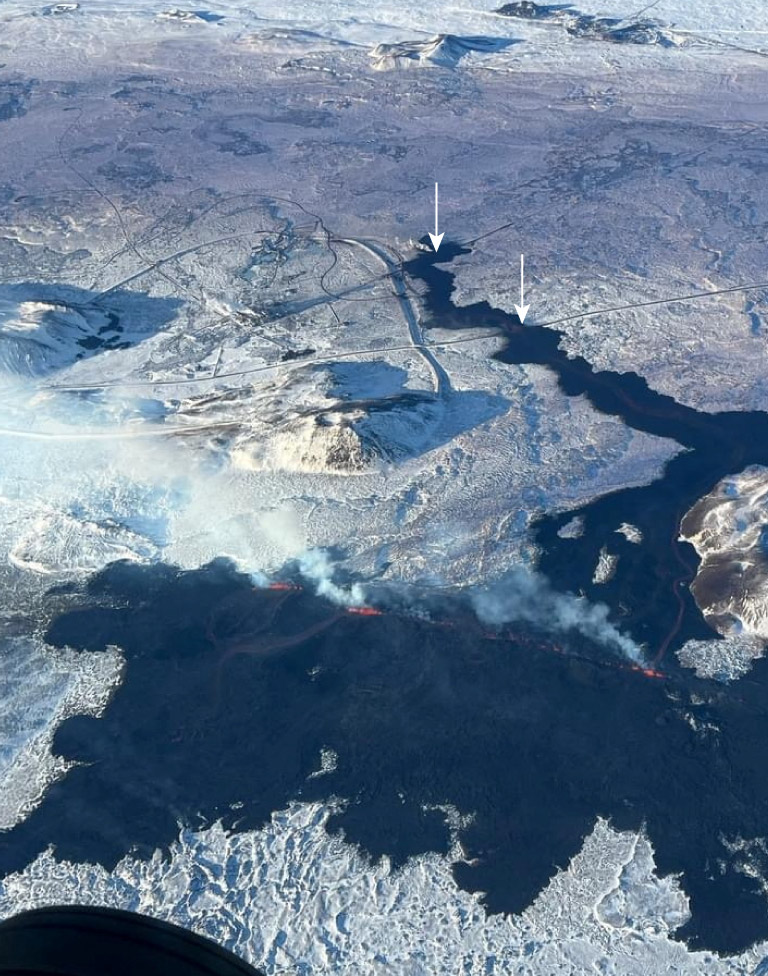
Hot water pipeline
Cut by lava
Aerial photo source:
Civil protection in Iceland
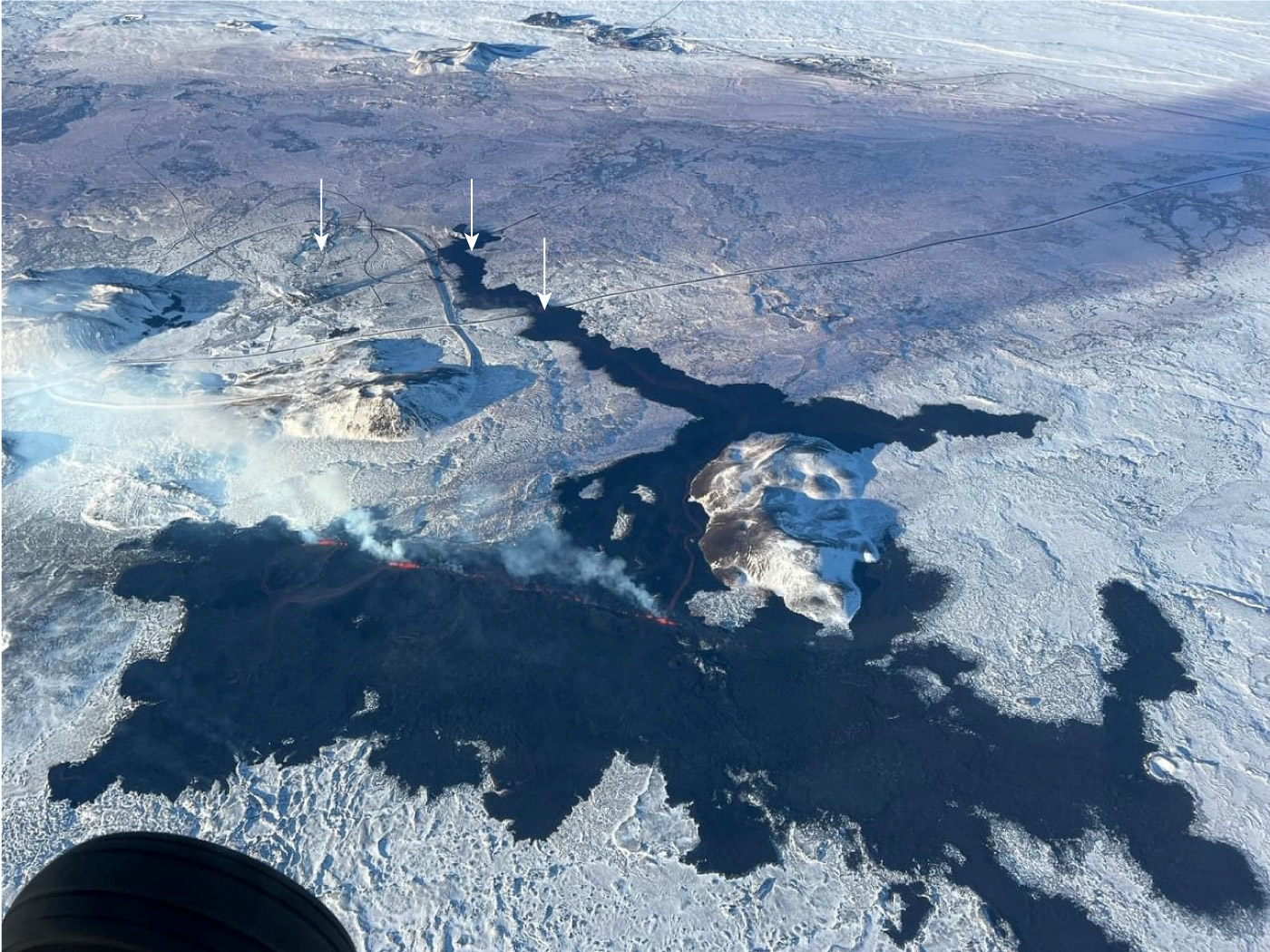
Hot water pipeline cut by lava
Aerial photo source:
Civil protection in Iceland
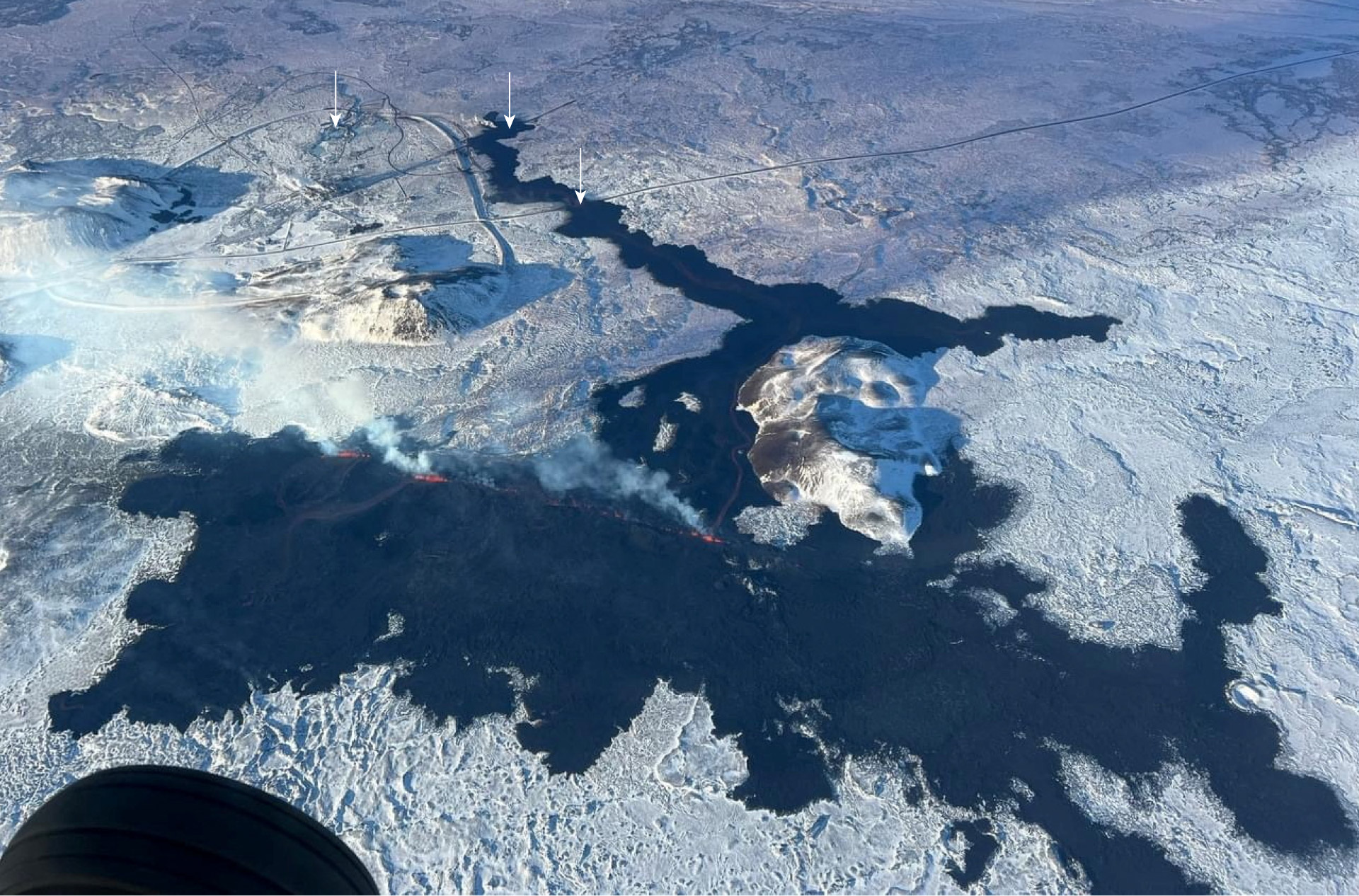
Hot water pipeline cut by lava
Aerial photo source: Civil Protection Iceland
The pattern of eruptions in this area began in 2021, with a new eruption once a year occurring in a relatively isolated area. However, in November, signs of a new eruption were pointing to areas farther west and much closer to the fishing village of Grindavik and other important infrastructure, including the power plant and the Blue Lagoon, a popular tourist resort. The government began building defensive walls in the area to protect these assets.
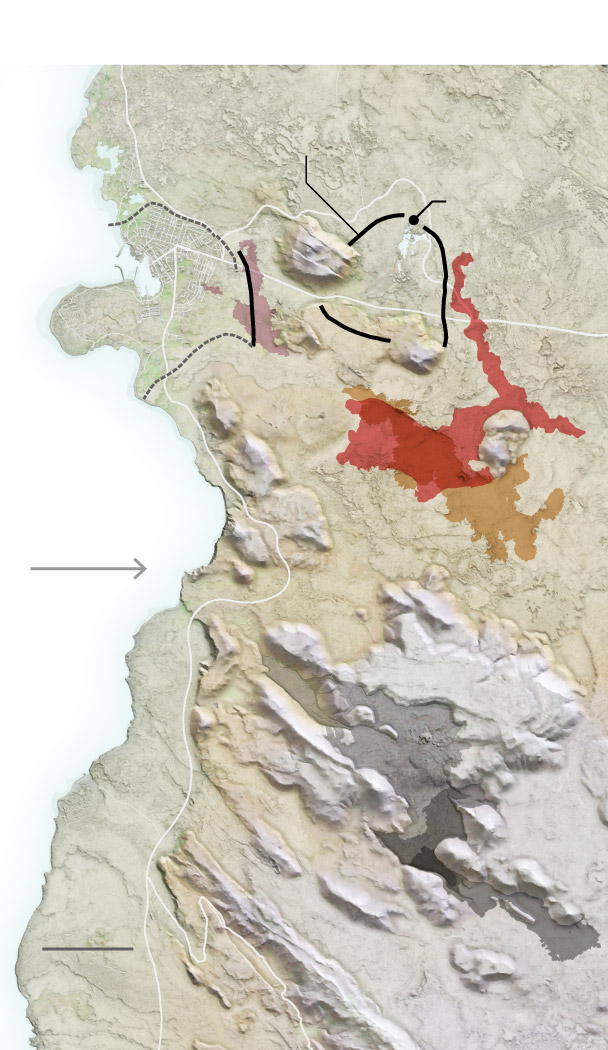
The construction of defensive walls begins
In November/December 2023.
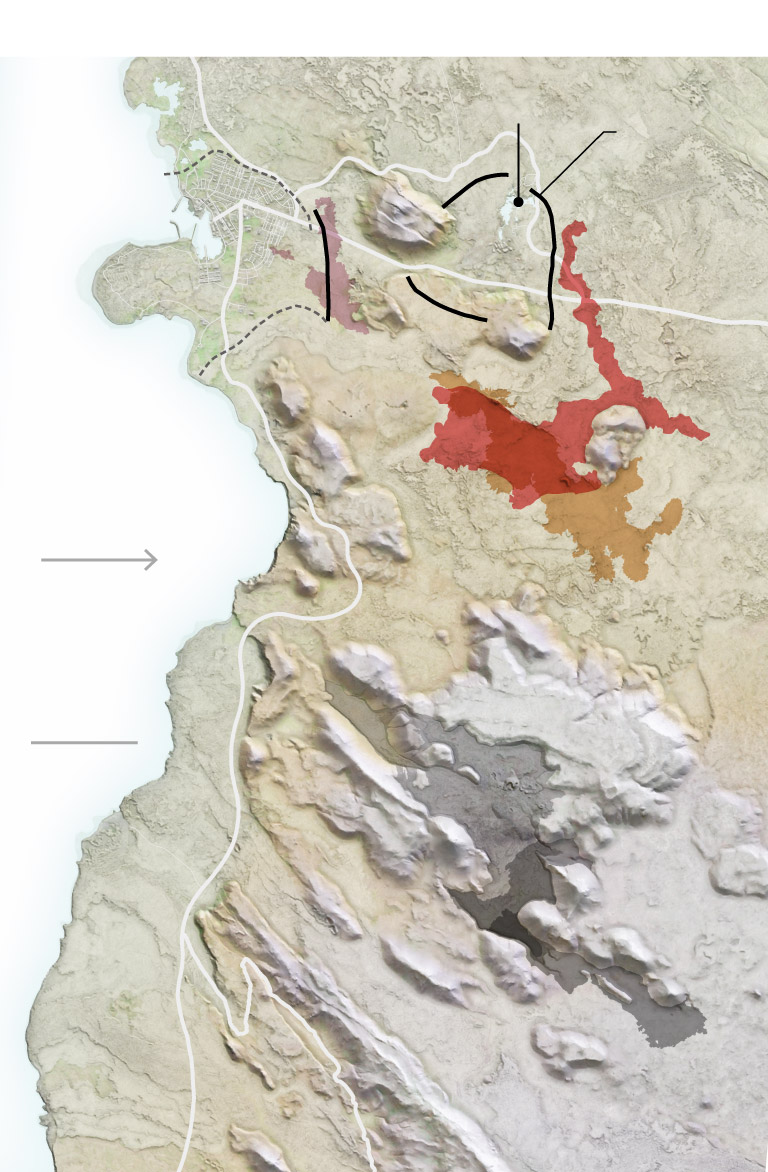
defensive
The walls begin
To be built
In November/December
2023
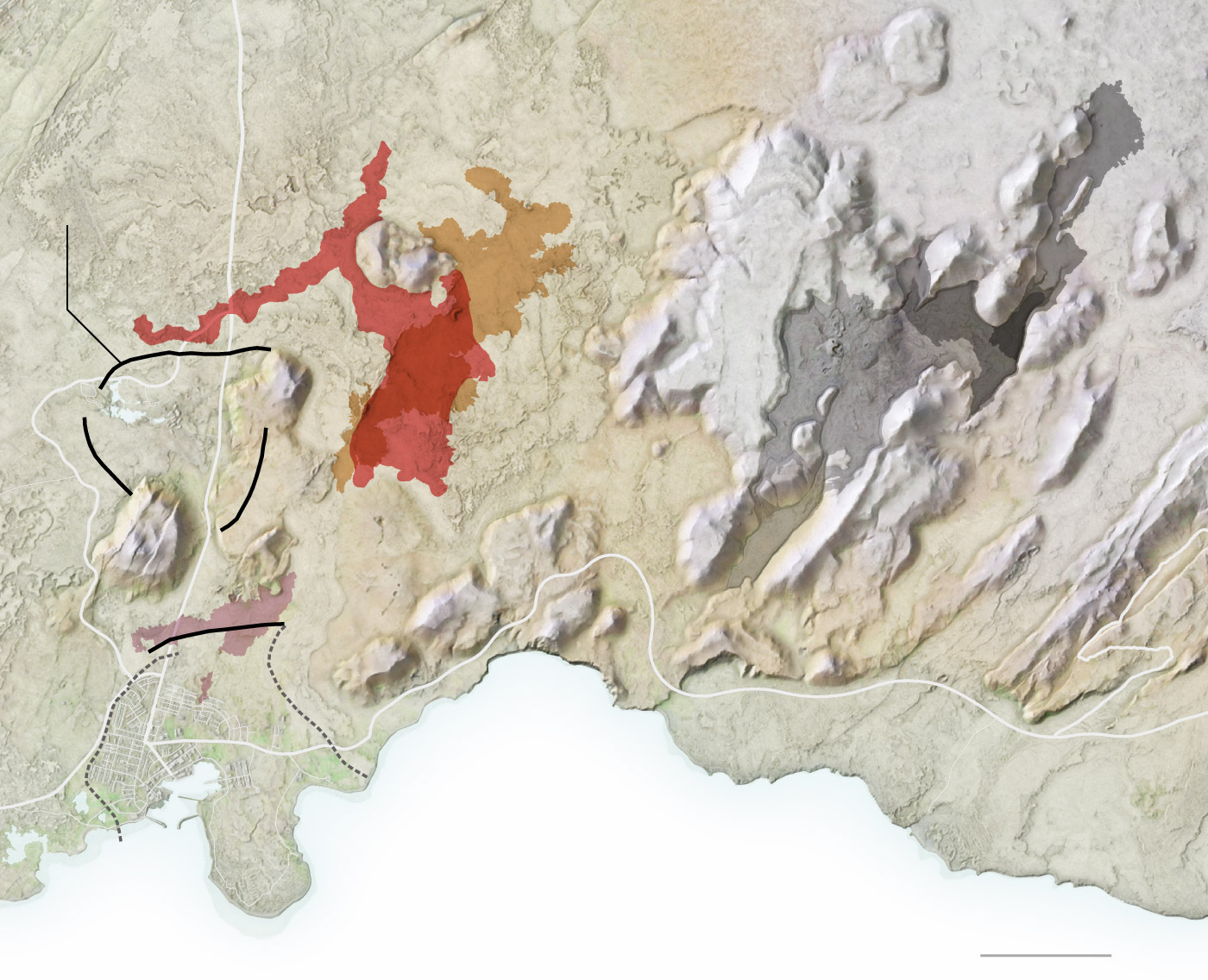
Defensive walls
Start building
November/December 2023
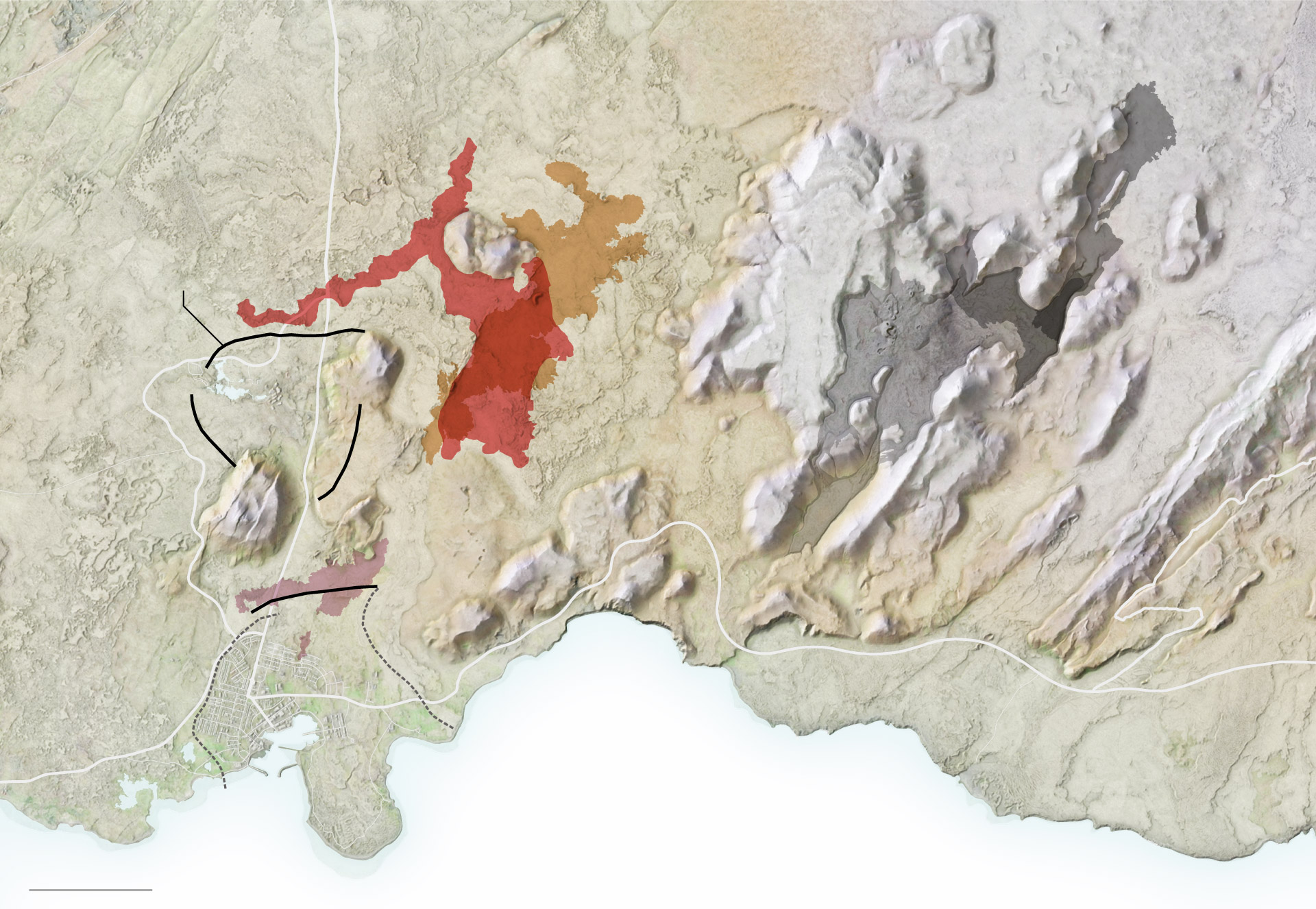
Defensive walls
Start building
November/December 2023
Starting on December 18, volcanic eruptions occurred repeatedly, and the residents of Grindavik were forced to leave. The future of the city itself is very much up in the air, as cracks have appeared on the surface making current conditions uninhabitable. Below is a January 14 aerial photo showing how the barrier barrier was, for the most part, able to divert lava flow from the city, although a fissure formed behind the barrier and destroyed three homes. Plans are being made to build future barrier walls near the city's homes.
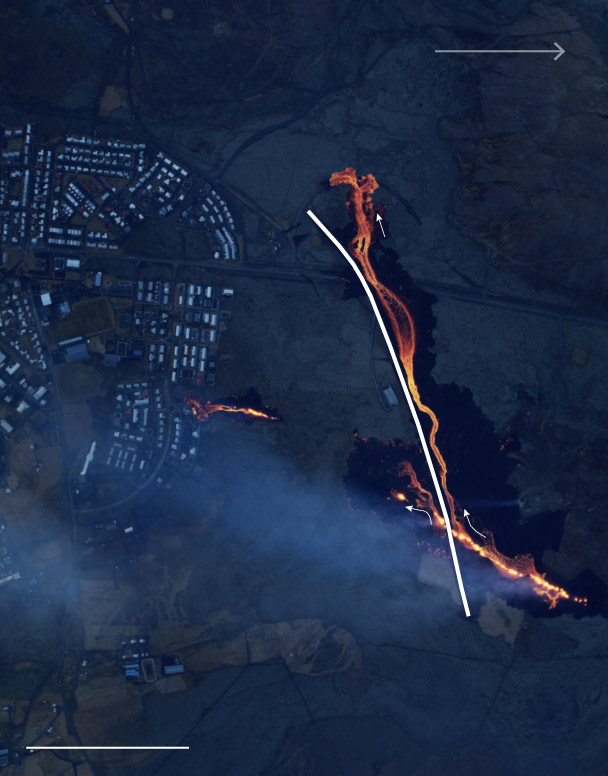
Smaller incision
formed out
Barrier wall and
Destroyed
Three houses
Lava was able
To hack
barrier
here

Smaller incision
formed behind it
Barrier wall and
Destroyed
Three houses
Lava what
able to penetrate
The barrier is here
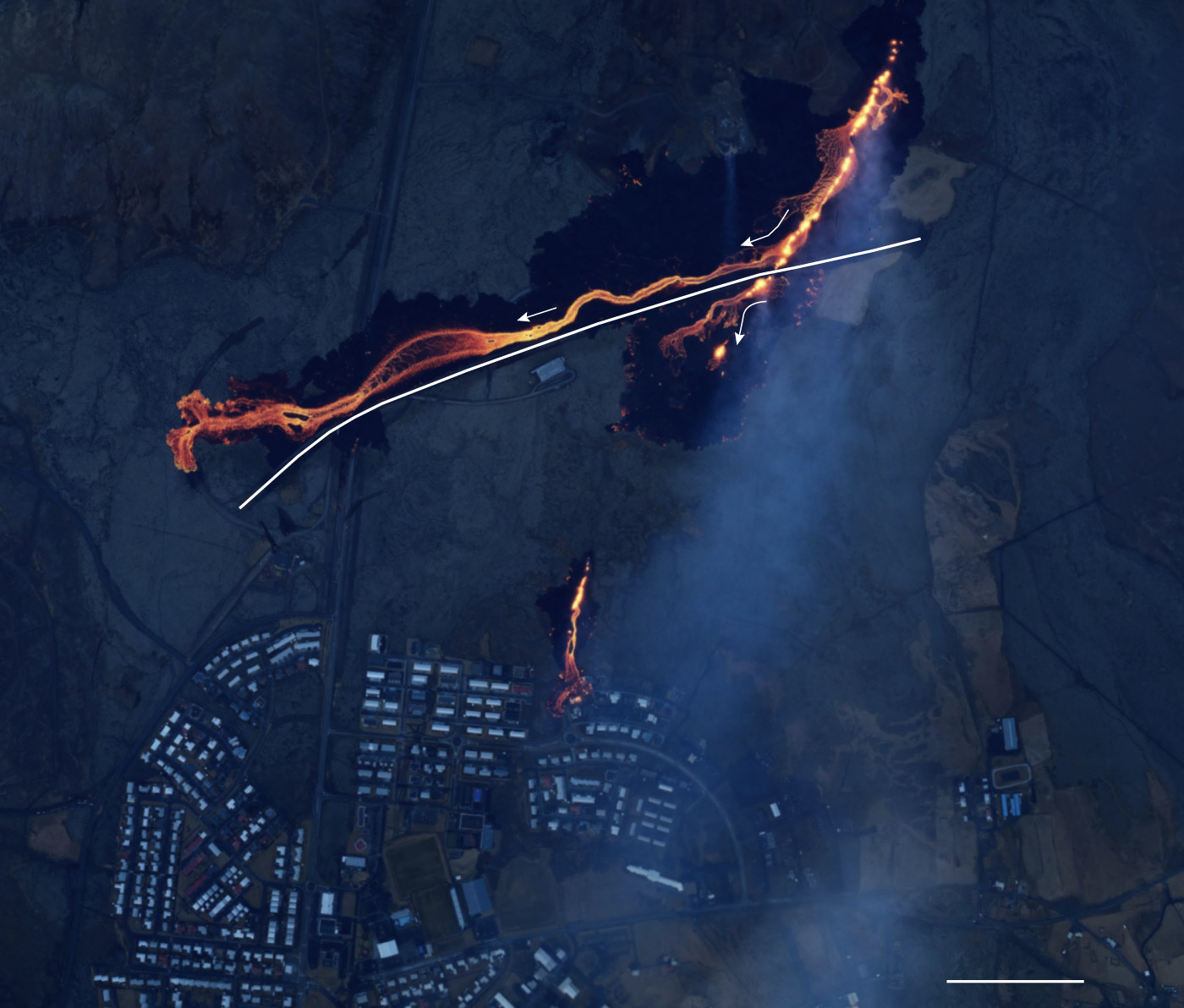
Lava managed it
Break through the barrier here
A smaller incision forms outside the wall
barrier and destroyed three houses
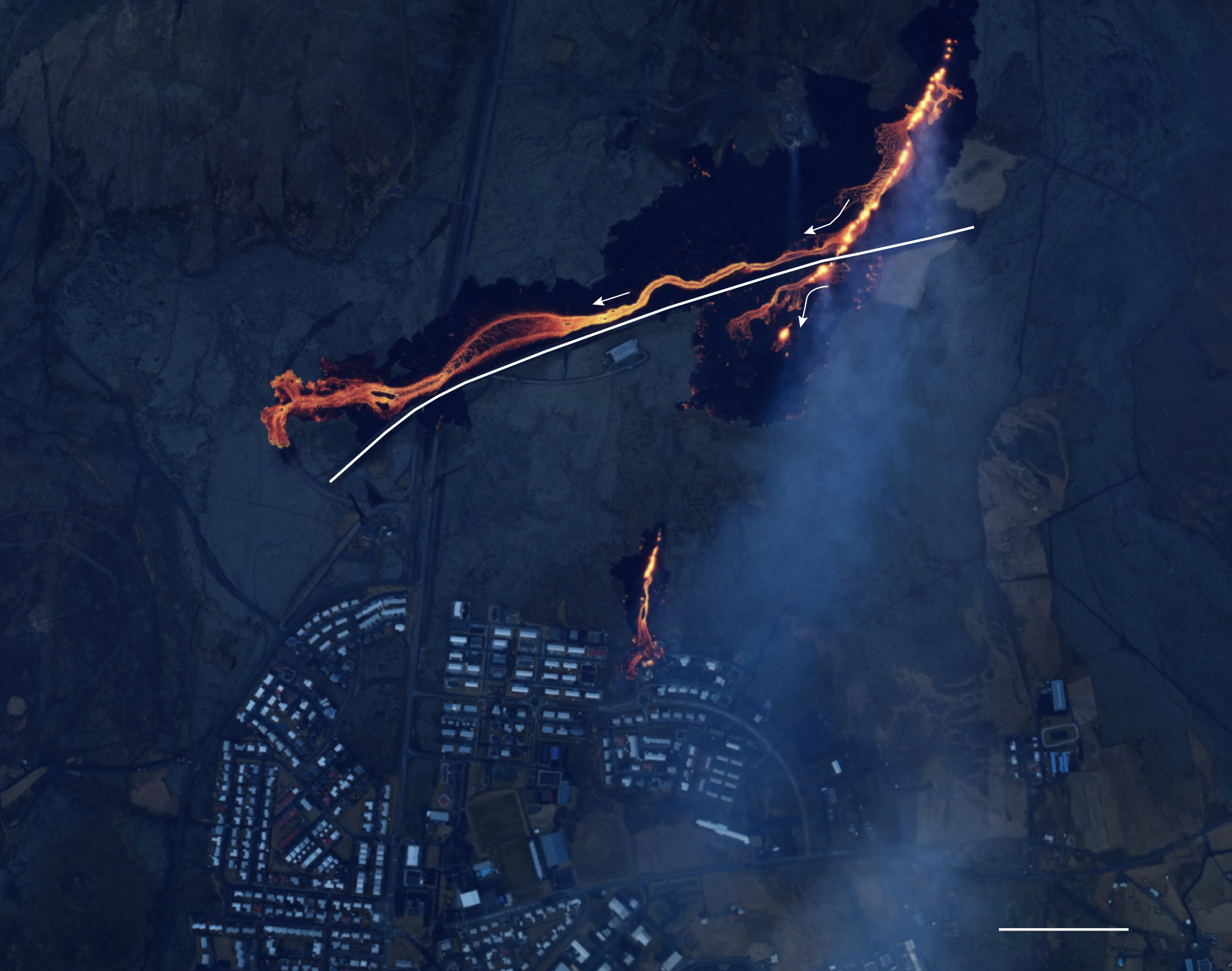
Lava managed it
Break through the barrier here
A smaller incision forms outside the wall
barrier and destroyed three houses
Sources: GeoSurvey Iceland, National Land Survey of Iceland, cartographic data via Ragnar Heiðar Þrastarson from The Icelandic Meteorological Office, the Institute of Geosciences at the University of Iceland, and the Icelandic Institute of Natural History and Statistics in Iceland.

